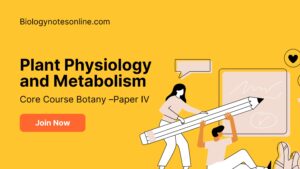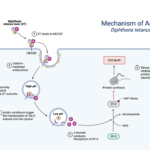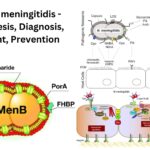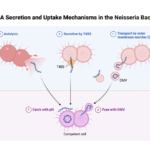
This course offers a comprehensive exploration into the physiological processes and metabolic pathways fundamental to plant life. Designed for advanced undergraduate or graduate students in plant sciences, this course integrates theoretical knowledge with practical applications to deepen understanding of plant functions and interactions with their environment.
Key Areas of Study:
- Plant-Water Relations: Explore the critical role of water in plant health, including water potential, transpiration mechanisms, and the effects of root pressure and guttation on water movement.
- Mineral Nutrition: Examine essential elements required for plant growth, focusing on macro and micronutrients, their roles, and the mechanisms of ion transport across cell membranes.
- Translocation in Phloem: Understand the movement of nutrients through the phloem, including the pressure flow model and the processes of phloem loading and unloading.
- Photosynthesis: Study the complex process of photosynthesis, including the roles of photosynthetic pigments, the function of photosystems, and various pathways of carbon fixation (C3, C4, CAM). Analyze the phenomenon of photorespiration and its impact on plant efficiency.
- Respiration: Investigate the metabolic pathways involved in plant respiration, including glycolysis, the TCA cycle, and oxidative phosphorylation. Explore processes such as anaerobic respiration, the glyoxylate cycle, and the oxidative pentose phosphate pathway.
- Enzymes: Learn about enzyme structure, properties, and the mechanisms underlying enzyme catalysis and inhibition.
- Nitrogen Metabolism: Delve into the processes of nitrogen fixation and assimilation, crucial for plant growth and soil health.
- Plant Growth Regulators: Study the physiological roles of key plant hormones, including auxins, gibberellins, cytokinins, abscisic acid (ABA), and ethylene, and their influence on plant development and responses.
- Plant Response to Light and Temperature: Analyze how plants respond to light and temperature changes, including photoperiodism (SDP, LDP, day-neutral plants), phytochrome signaling, and the process of vernalization.
1
Plant-Water Relations
Learn about Plant-Water Relations
Learn about Plant-Water Relations
2
Mineral Nutrition
Learn about Mineral Nutrition
Learn about Mineral Nutrition
3
Translocation in Phloem
Learn about Translocation in Phloem
Learn about Translocation in Phloem
4
Photosynthesis
Learn about Photosynthesis
Learn about Photosynthesis
5
Respiration
Learn about Respiration
Learn about Respiration
6
Enzymes
Learn about Enzymes
Learn about Enzymes
7
Nitrogen Metabolism
Learn about Nitrogen Metabolism
Learn about Nitrogen Metabolism
8
Plant Growth Regulators
Learn about Plant Growth Regulators, Discovery and Physiological Roles of
Learn about Plant Growth Regulators, Discovery and Physiological Roles of
9
Plant Response to Light and Temperature
Learn about Plant Response to Light and Temperature
Learn about Plant Response to Light and Temperature




